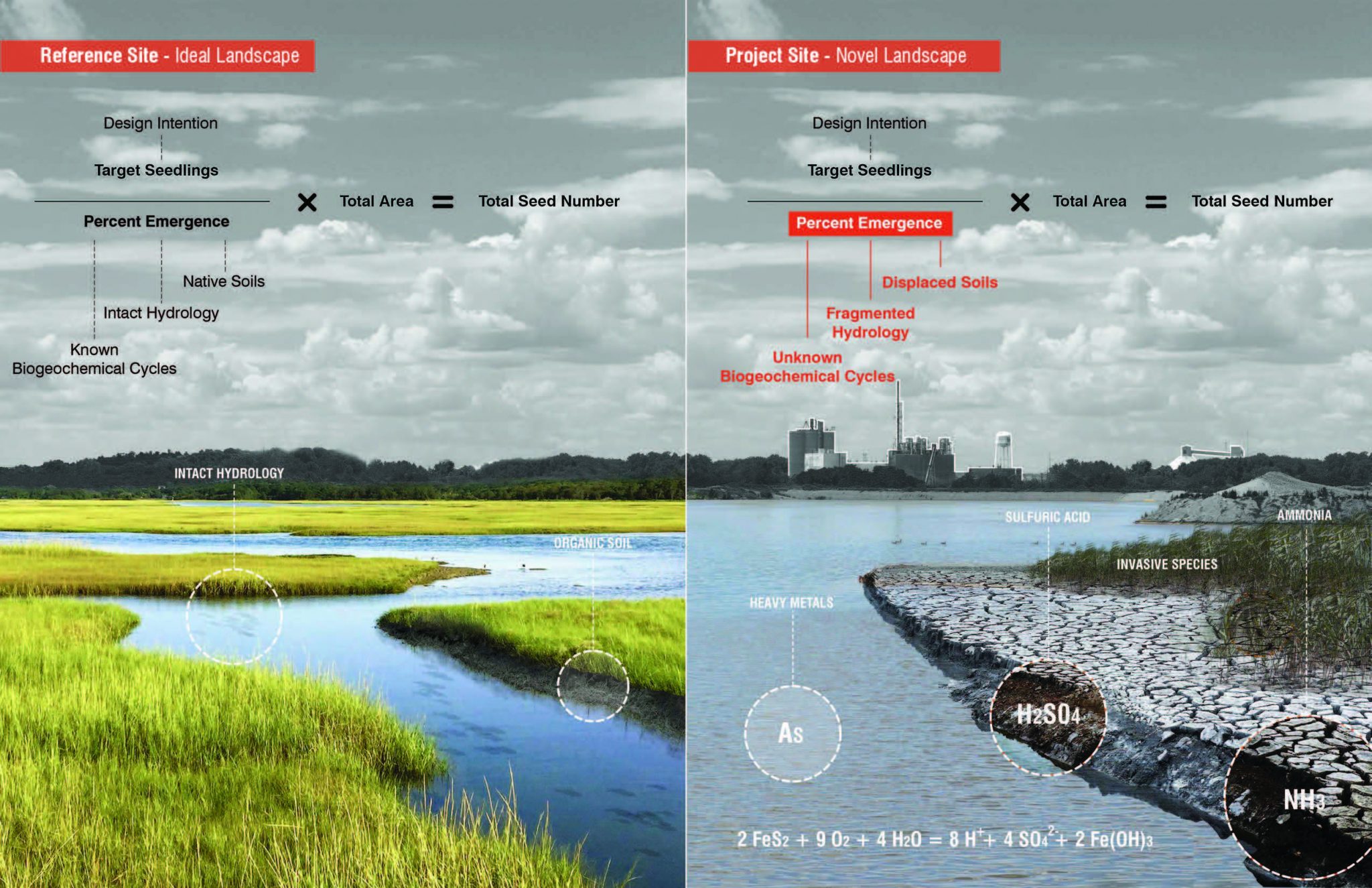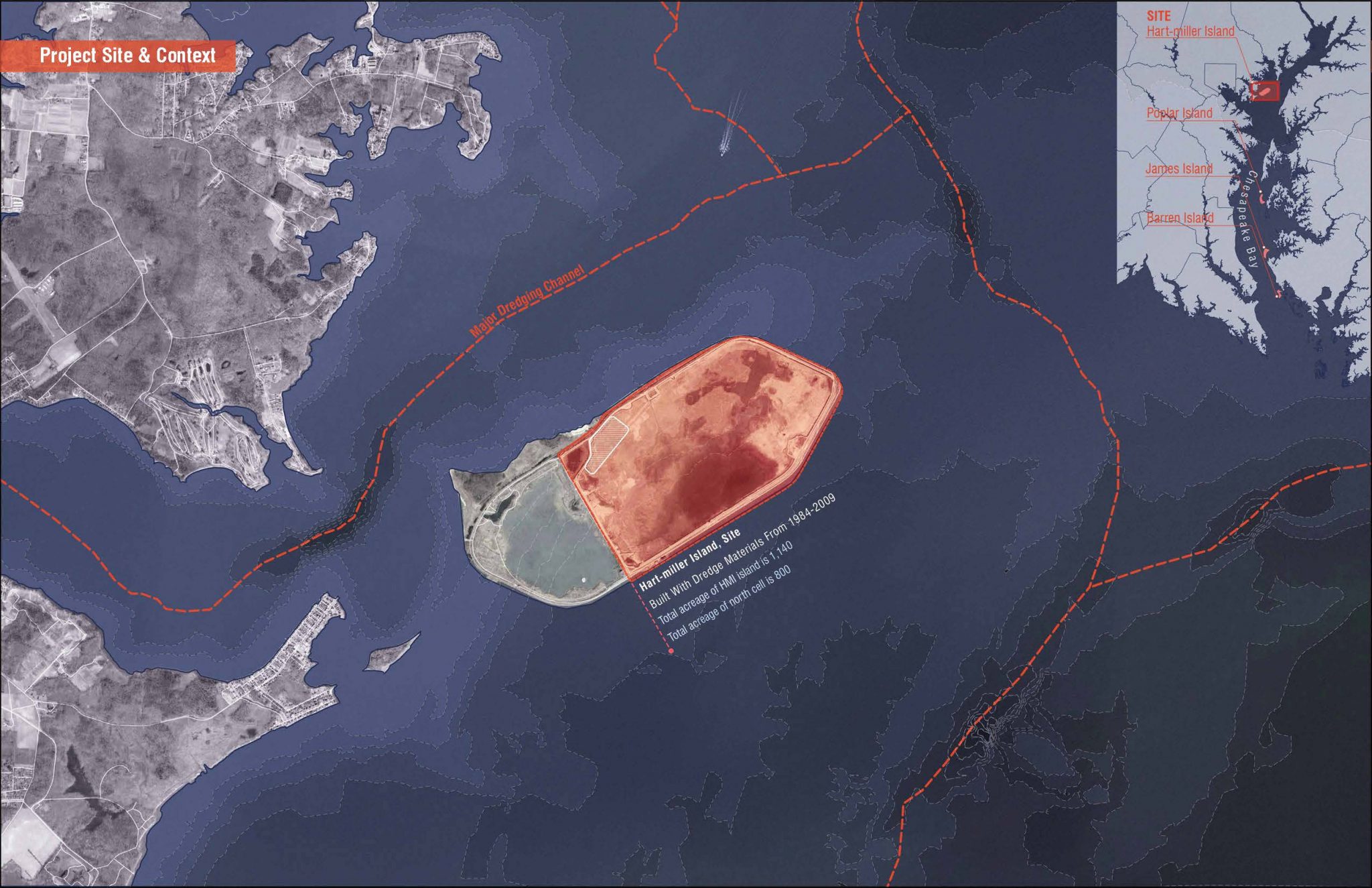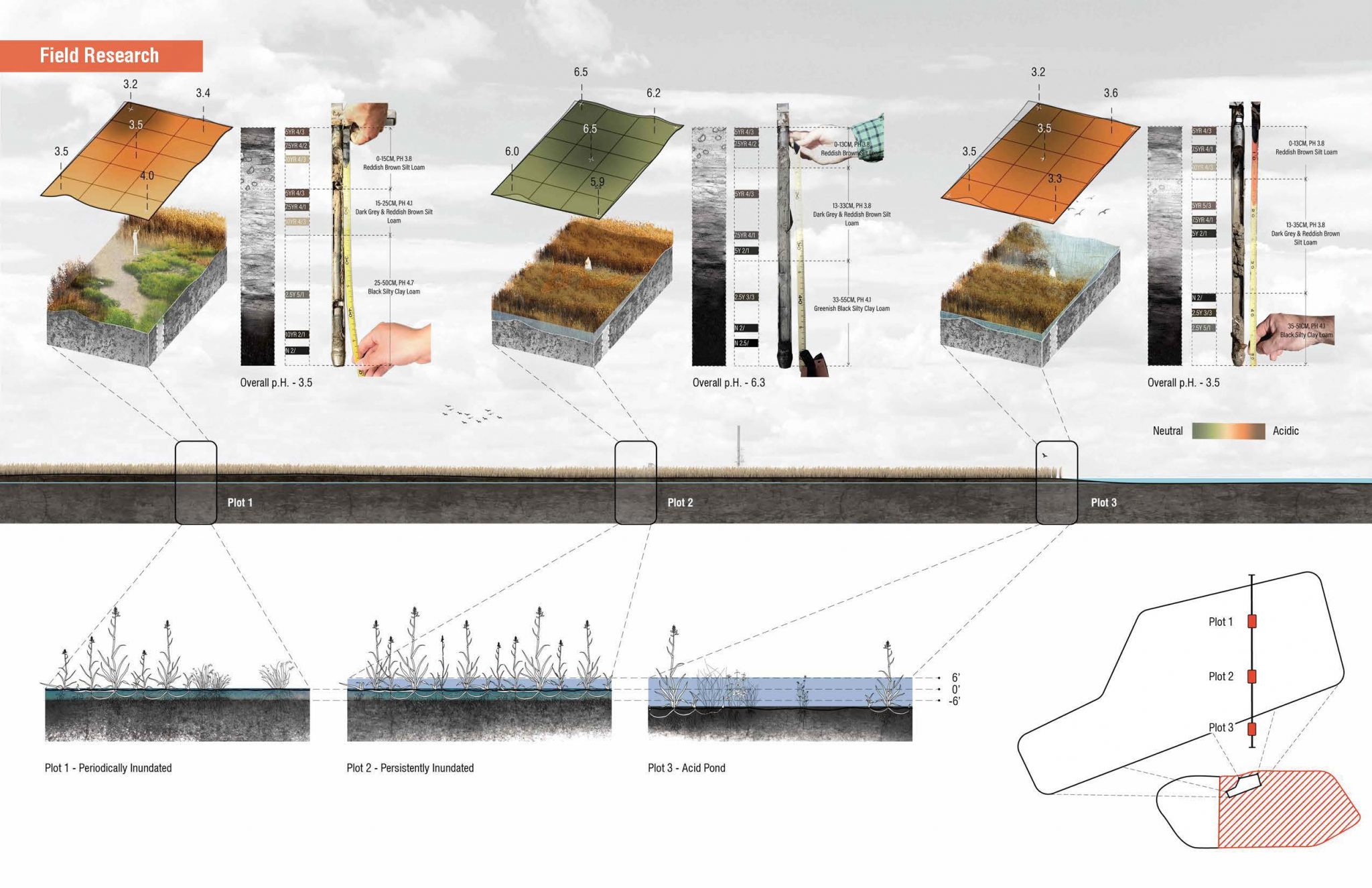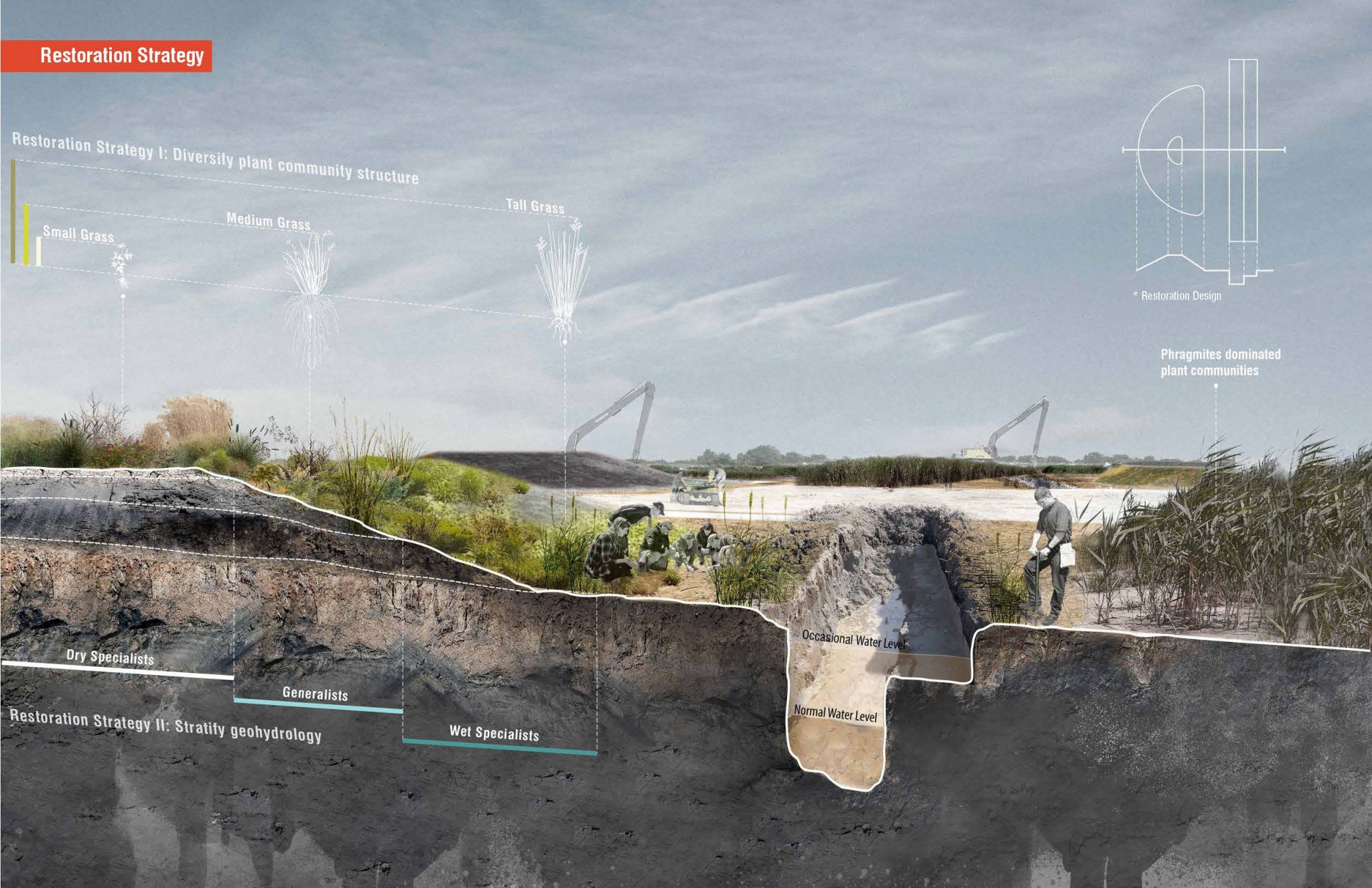Landscape architects design novel ecosystems (Human-built, modified, or engineered places of the Anthropocene). These dynamic socioecological environments lack adequate natural analogs, yet pristine, idealized ecosystems are often used as references for projects in these complex sites. This primary research exploring seed germination rates for the sediment landscape of Hart-Miller Island (HMI) in the Chesapeake Bay expands the material and methodological frameworks for landscape architects to design novel ecosystems by calibrating restoration strategies and design outcomes to the specificities of a real project site, soils, and plant species. The findings, which show significant variance between published germination rates under controlled conditions and experimentally derived seedling emergence in site soil, highlights the importance of aligning design intent, research methods, and material practices.
The translation of the experimental findings into a custom seed mix and seeding plan for the restoration project reinforces the application of landscape research methods and material practices in design. These in turn, enhance the ability of landscape architects to design and realize high performance outcomes in novel ecosystems, strengthening the professional community and supporting vibrant socioecological systems.
Maryland Port Administration, Maryland Environmental Service, University of Maryland Center for Environmental Science, The University of Virginia, Ernst Seeds


Reference Site v.s. Project Site: Idealized reference sites are often used as analogs for project sites who’s soil, hydrolgocial, and biogeochemical conditions vary dramatically, which can undermine design intent and landscape performance outcomes.
PROJECT SITE & CONTEXT |
Hart-Miller Island (HMI) is a 1,140 acre island located in the upper Chesapeake Bay in Baltimore County, Maryland. It is a novel ecosystem, built from the 100 million cubic yards of sediment dredged from Baltimore Harbor shipping channels.

FIELD RESEARCH|

Lacking an adequate natural analog reference site, the team conducted primary field research at HMI to document and understand the project site’s specific biogeochemical systems in order to inform the design of a restoration strategy.
EXISTING PLANT COMMUNITY | Plant diversity in the study area was limited to nine (9) genera commonly found in disturbed sites, with Phragmites as the the most prevelant genus encountered.
RESTORATION STRATEGY |
In developing a restoration strategy for the complex conditions at HMI, the team designed a living landform intended to stratify the site’s geohydrology, grade separate Phragmites from targeted habitat areas, and diversify the plant community structure.

PLANTING DESIGN: |
Species for the living landforms were organized into three mix types – wet sepcialists, generalists, and dry sepcialists, and were selected for their individual tolerances to survive the documented variability of field conditions including moisture, pH, and invasive pressure.
PLANTING REFERENCES |
The restoration design pallete drew on state sponsored studies, precedent projects, and field observations – aiming for individually tolerant species, as well as a composite community that could fill spatial, functional, and temporal niches in the proposed living landforms.
SOLVING FOR EMERGENCE: MATERIALS AND METHODS | To implement the proposed restoration design for HMI, the team needed to convert the conceptual plant palette into a custom seed mix, which could be communicated to contractors via targeted seedlings/meter squared and effective seeding rates.
SOLVING FOR EMERGENCE: DOCUMENTATION AND VISUALIZATION | The germination study included four primary steps: soil preparation, seed preparation, data collection, and data visualization and interpretation.
STUDY RESULTS SAMPLE PAGE: Study findings showed significant variance between published germination rates under controlled conditions and experimentally derived seedling emergence in site soil and site soil amended with lime.
RESULTS: SEED MIX I – WET SPECIALISTS: The experimentally derived germination rates from this study provide the missing variable in developing an effective seeding rate for the proposed species in the HMI restoration project.
RESULTS: SEED MIX II – GENERALISTS: The seeding rate is calculated by dividing the desired seedlings/m2 by the experimentally derived germination rate to arrive at a total number of seeds/m2.
RESULTS: SEED MIX III – DRY SPECIALISTS: Once known, seeds/m2 is converted to a quantity of seeds/pound based on known seed sizes, which is then converted to pounds of seed/acre – an industry standard seeding rate that can be specified for procurement.
SITE CALIBRATED SEED MIX: Utilizing the experimentally derived rates to develop an effective seeding rate for the proposed species in the HMI restoration project ensures greater accuracy and efficacy in calibrating the seed mix to the site conditions.
SITE SPECIFIC SEEDING PLAN: The translation of the experimental findings into a custom seed mix and seeding plan for the HMI restoration project reinforces the application of landscape research methods and material practices in design.
REFERENCES:
Acid Sulfate Soils:
Plant Selection
Germination Standards/Seeding